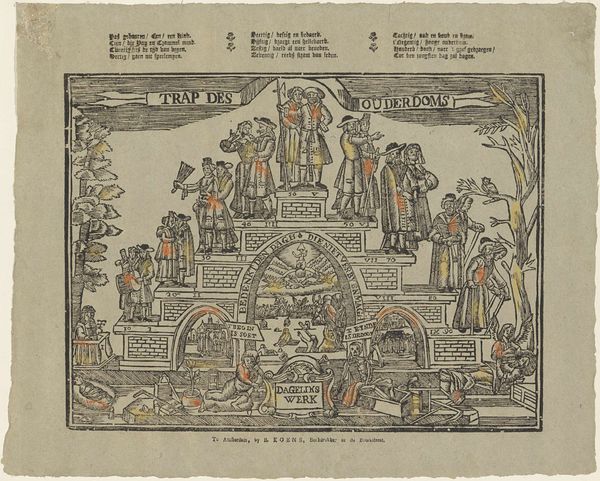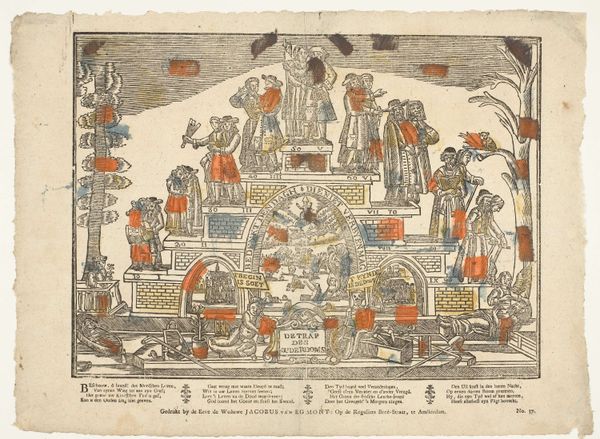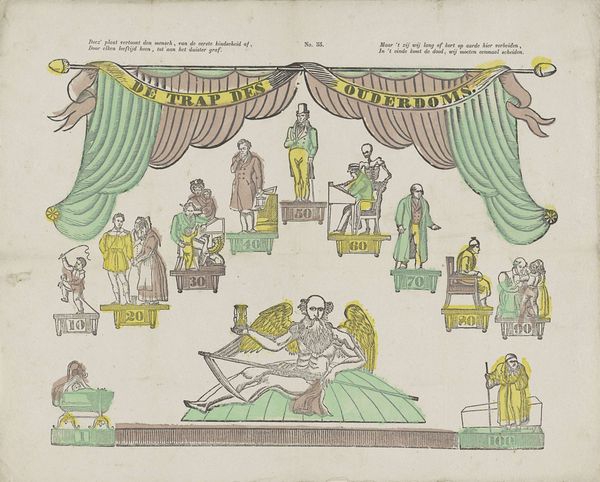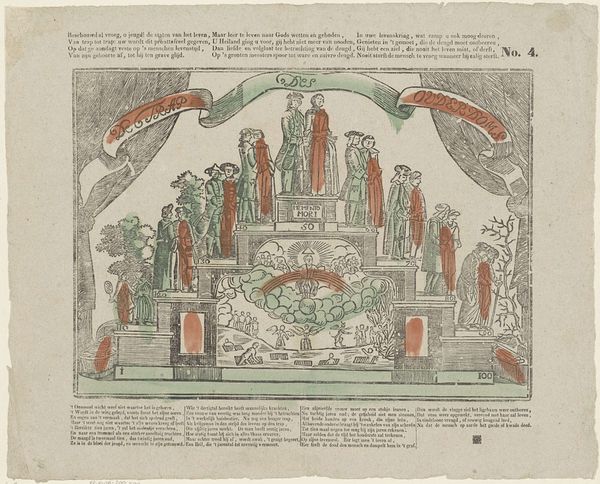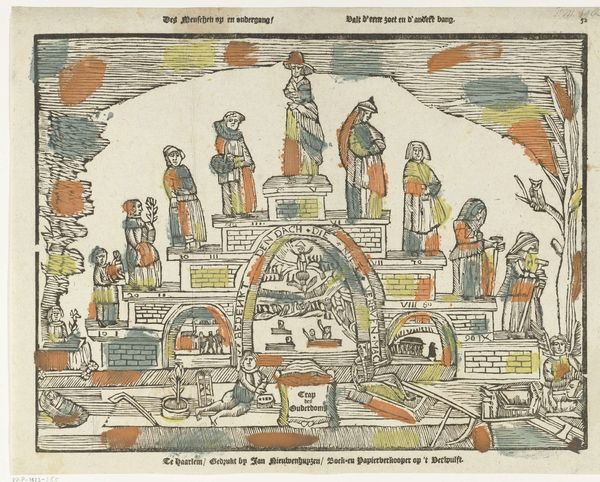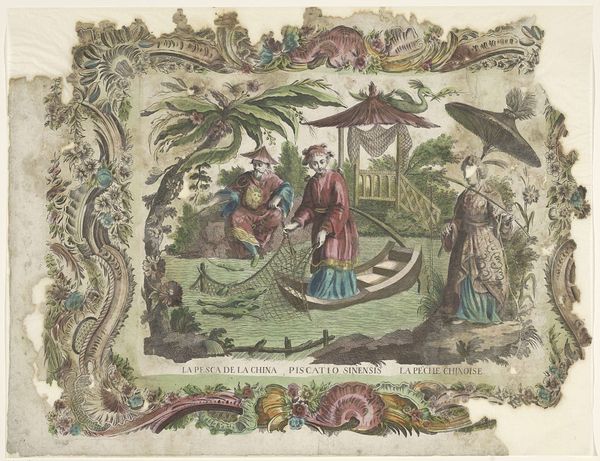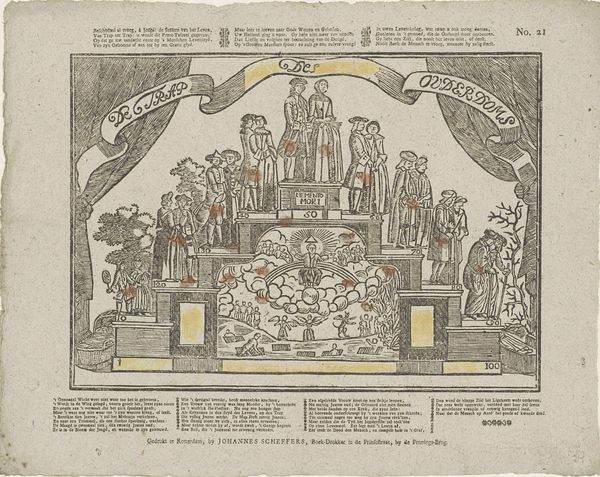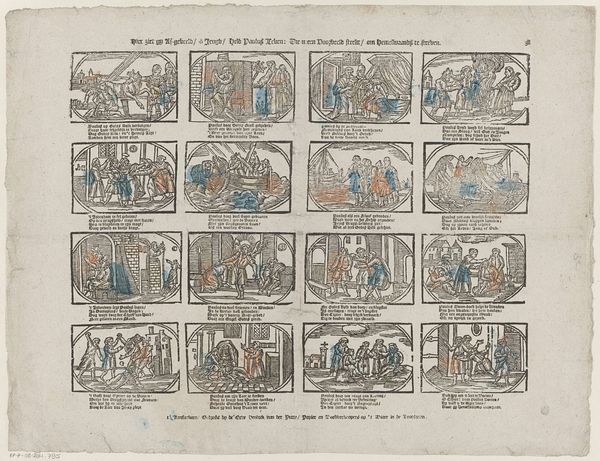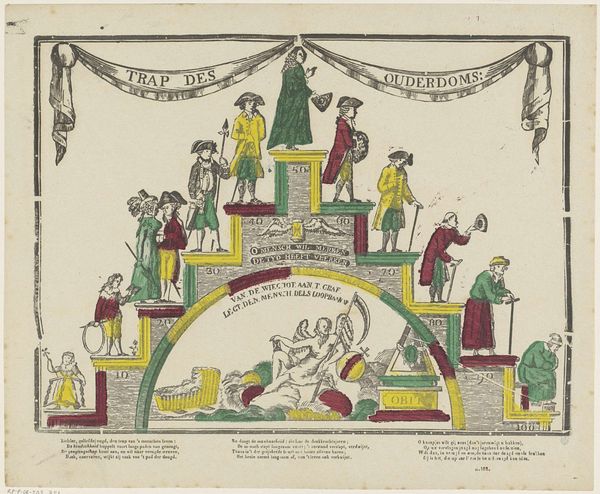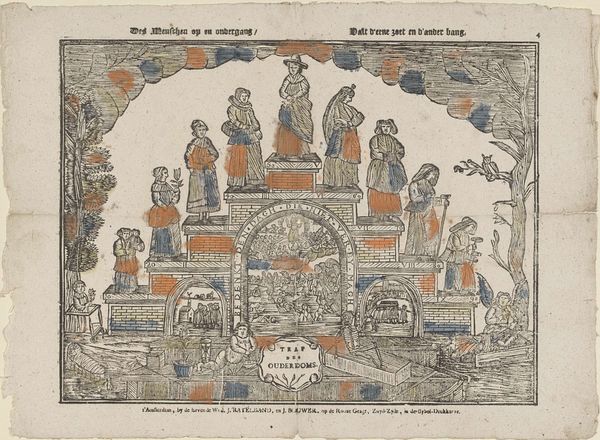
print, engraving
#
portrait
#
allegory
#
narrative-art
# print
#
figuration
#
momento-mori
#
romanticism
#
line
#
cityscape
#
genre-painting
#
history-painting
#
engraving
#
miniature
Dimensions: height 348 mm, width 405 mm
Copyright: Rijks Museum: Open Domain
Curator: This is "Trap des Ouderdoms," or "Degrés des Ages," a fascinating print made sometime between 1800 and 1833 by Philippus Jacobus Brepols, currently residing here at the Rijksmuseum. It presents the stages of life as an allegorical narrative. What are your first thoughts? Editor: Gosh, what a trip! My first impression? Slightly terrifying but undeniably captivating. It feels like a brightly colored game of life, if the game was designed by someone with a morbid sense of humor and a penchant for theatrics. Curator: Exactly. We see life depicted as a staircase, with figures representing different ages climbing toward decline and death, all framed within gnarled trees that signal mortality and remembrance – almost a "memento mori". What I find interesting is the dual purpose; its didacticism and its commercial availability. Editor: The framing is cool! Like two dark and ominous parentheses marking the beginning and end of existence. And those tiny figures! I love how each little tableau encapsulates an entire stage. There’s a young couple holding hands, then another seemingly bickering and some poor soul laid up in bed surrounded by…devils? Curator: Ah, you've noticed the Judgment scene at the base, it’s an amazing focal point. Each vignette offers societal commentary about morality and fate and, because Brepols operated a print factory, we also need to consider this print’s availability in popular culture during the period. How would its message impact the broader populace? Editor: That universal judgment scene reminds me a little of Bosch! The way everyone’s packed into hell! Do you think people took this to heart or viewed it as just a good story, well, kind of gruesome one, to pass around? Curator: It’s difficult to know definitively the original viewers' full intent and reaction, however, we do know this piece sits squarely within romanticism, employing sentimental themes intended to provoke emotional responses in its target demographic. It reminds us that our individual stories contribute to the collective narrative. Editor: And it's a good reminder to enjoy the climb, or, avoid falling off those stairs if we can. Seeing it broken down like this, kind of laid out. Golly it gets to you! Curator: Absolutely. And as historians and artists, we sift through those impressions to discover resonance from one generation to another, while contemplating the politics of our collective existence.
Comments
No comments
Be the first to comment and join the conversation on the ultimate creative platform.

